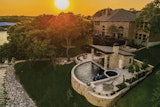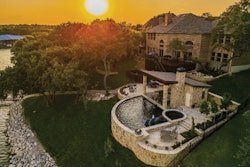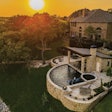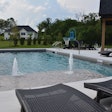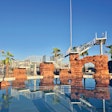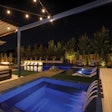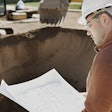
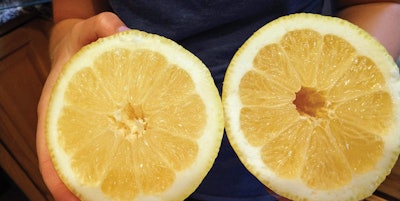 Photos courtesy Mike Low
Photos courtesy Mike Low


These are lemons. Ridiculously amazing lemons. Tasty, juicy, gigantic lemons.
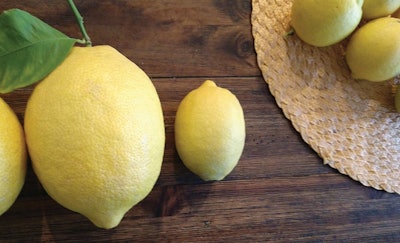
These images, and the biological theories from which they are the result, captured my attention in the midst of my own quest to return to full health after a devastating bout with C-19 back in the fall of '21. It hit some people so much harder than others. Two and a half years later, I'm still making efforts to recover my previous lung capacity under exertion, or altitude greater than 8000 feet. While I've always been interested in living a more healthy life, I'm more vested than ever.
The images and ideas about oxygenation clicked for me immediately because I was reminded of geological history studies that have determined (as measured from analyzing amber) the earth's prehistoric atmosphere was upwards of 35% oxygen, compared to today's 21%, and it also had higher atmospheric pressure. As a result, under these conditions, the Earth's flora and fauna grew to an astonishing size.
Today, we no longer have these enhanced conditions. But what if we could recreate them? What impact would that have on health and recovery?
WHAT IS WELLNESS?
As we can tell from amber samples, our atmosphere used to be like a global hyperbaric oxygen chamber, which we know can be very therapeutic for accelerated healing. I began thinking along these lines as I attended sessions at a place called Eminent Wellness, where they have a hyperbaric chambers with 02 supplementation frequented by many sports pros and cancer patients, as well as far infrared saunas and cryo chambers. There, I've been learning how to reclaim my capacity and heal from my C-19 experience, and live a lifestyle that is preventative in nature as well as health optimizing and anti-aging. It is becoming a more central theme of my personal reading material. As it turns out, I'm not alone.
According to the Global Wellness Institute https://globalwellnessinstitute. org/:
"Wellness is a word that was not often spoken or seen in-print just 10 years ago. Yet, in the last few years, it has become ubiquitous in consumer and trade media and has entered the vernacular all around the world. Within a relatively short span of time, wellness has emerged as a dominant lifestyle value."
"Wellness is estimated by the Global Wellness Institute to be a multi-trillion-dollar market, with global spending exceeding $4 trillion every year since 2017. Its growth rate has consistently outpaced global GDP growth, with positive gains even in years of global economic downturn."
And what exactly is wellness? It's just the active pursuit of holistic health. It's an awareness of that value and a lifestyle of making choices to attain it.
 Durango Hot Springs where Exceptional Water Systems added Oxygenation to their mineral rich water.
Durango Hot Springs where Exceptional Water Systems added Oxygenation to their mineral rich water.
WHERE DOES WELLNESS COME FROM HISTORICALLY?
Most cultures across the globe have long recognized the therapeutic benefits of hot water, evident in practices across Greek, Roman, Egyptian, Turkish, Japanese and Nordic cultures. Ancient Roman baths, epicenters of communal gatherings, highlighted water's social, spiritual and relaxation purposes.
One of the most notable and early examples of such social examples of gathering are the Greek public baths that emerged 2500 years ago. These baths were often located alongside physical training facilities and evolved from initially cold-water plunges to warm baths known today as thermo-therapy.
Romans, with their advanced understanding of engineering, elevated bath culture to new heights literally and figuratively. One of the most significant elements to the experience of these baths is that they made them free. This healthy, leisure experience was available to everyone, and united everyone within the same public space.
Similarly in Japan, the Onsen tradition spans 3000 years, rooted in medicinal, purification and mentally cleansing rituals. In their own take on thermo-therapy, Nordic cultures, down the centuries, embraced the intense and jarring idea of alternating extreme heat and cold as they dashed from saunas into the frigid Arctic air and back. They realized that this contrast in experience had significant, invigorating benefits to mind and body.
You can see that there is a long history of the value of healing water and wellness in civilization, which is the precursor of today's spas. Most current hydrotherapy experiences preserve and offer this timeless tradition as much as possible, ensuring an unforgettable well-being experience through diverse treatments that have evolved with our interpretation and understanding of the ancient axiom "health from water." [The term spa is a direct Latin derivative of Sanitas Per Aquam (or SPA), which means "health from water."]
WHAT DOES WELLNESS HAVE TO DO WITH THE POOL INDUSTRY?
As we previously outlined, both from a historical and scientific level, our relationship to water is fundamental. In an industry that has a base of clients that can range from economical to elaborate, the immediate need for the connection to water becomes evident. I think that if you are a designer, a builder or even in the service and maintenance facet of the industry, you should embrace your role in the wellness of your client.
The more you understand how water integrates with wellness, the better you can speak to your customers' innate desire for it. And whatever they may say, at a fundamental level, that's the end goal of their purchase. They may not be able to describe it that way, yet.
In terms of wellness products that we provide, of course we think first of pools and hot tubs, but in addition to those fundamental elements, we have cold plunge, multi-sensor showers, nano and micro-bubble detox treatments, sensory deprivation chambers, mineral and salt baths, vortex and hydrodynamic cavitation pools, just to name a few.
In addition to these water-based ideas, there are so many other avenues that our industry encompasses. For example, we often see dry and infrared saunas and steam bath installations with pools. Those items are common, but the introduction of contrasting temperatures has become increasingly popular. High-volume ice machines for cold plunges, in order to alternate temperature extremes with saunas, are growing in popularity. Beyond the sensory experience of the skin, there are more holistic approaches to engaging the senses. In the world of smell, salt cabin aromatherapy is finding new adherents every day, the same for visual and audible therapies, chromotherapy, light therapy, and isochrone music for brain relaxation. These have all become integral to the realm of wellness.
In conclusion, having a fundamental understanding of the concept of wellness and how it relates to water, both historically and scientifically, can and will change your relationship with your clients. In the future, that connection will only grow.
The subject of Wellness is massive in scope. Many have made it their life's study. In future articles, we will revisit the team of experts here to deliver more insights on how you can make this field of inquiry relevant to you and to your business. We look forward to sharing more with you in the months ahead. Also contributing to this story were Mike Low, Michael Geyer, John Paul Boulevard and Joel Eric Mignaut.





















